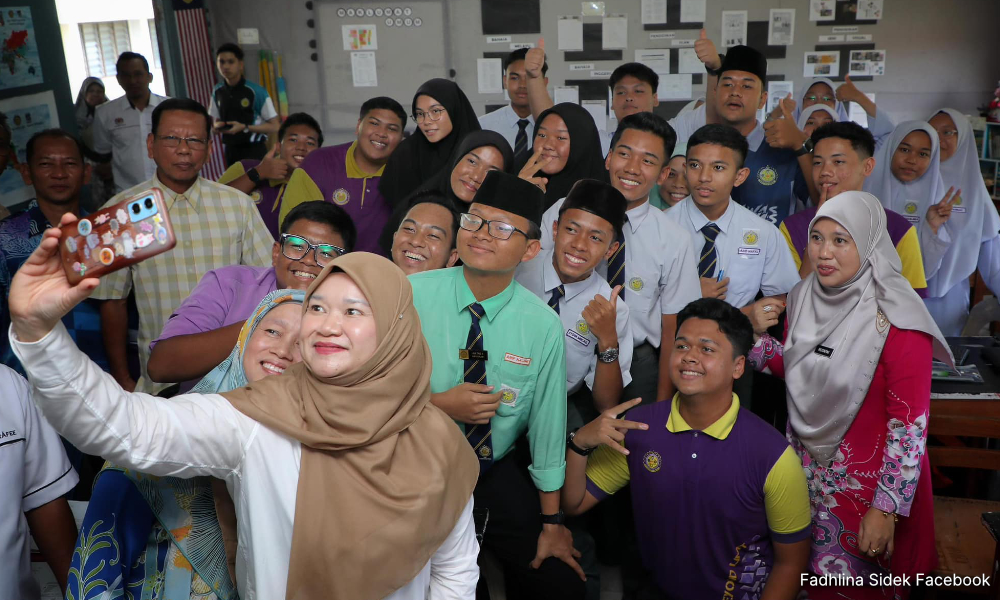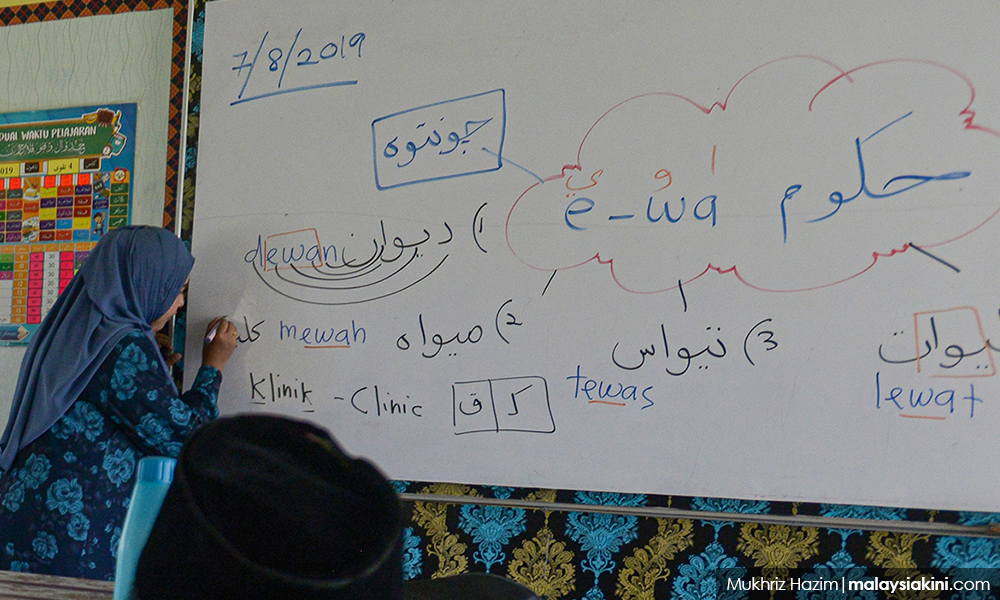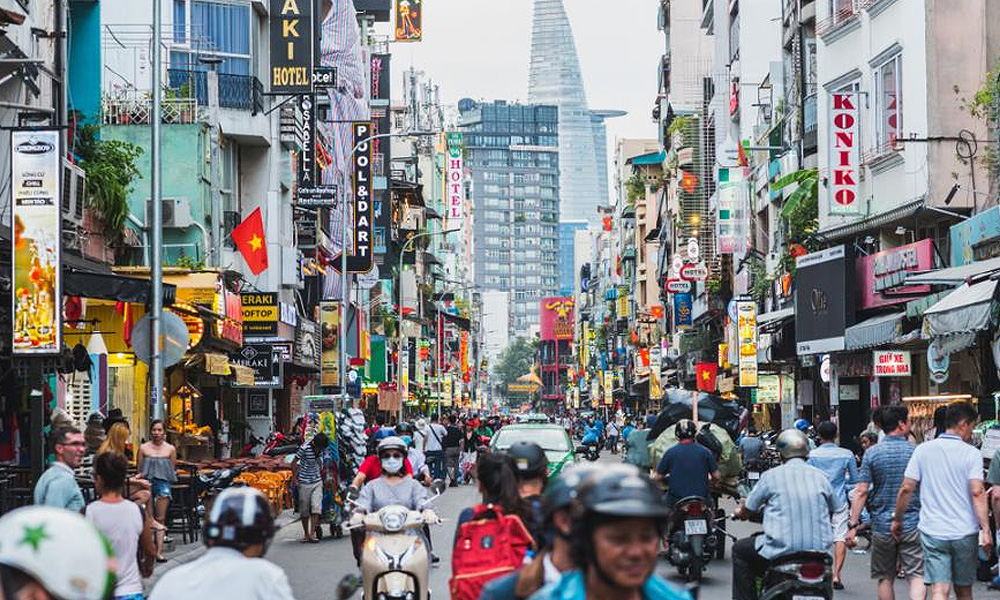Our schools will offer optional courses in Thai, Khmer and Vietnamese – on top of Mandarin and Tamil – to promote multilingualism.
Education Minister Fadhlina Sidek, who announced this yesterday, was correct in saying, “Asean strength lies in its cultural, linguistic and traditional diversity.
“To harness this, we must prepare our youth to be multilingual, adaptable and culturally competent.”
Substitute the word Asean for Malaysia and we have the perfect reason to maintain our Chinese and Tamil schools.
Yet some “nationalists” have long demanded that our vernacular schools be shut down, with the most recent call in February from an Umno Youth exco member.
I've always wondered why ex-PM Mahathir Mohamad’s Look East Policy encouraged us to look far, far away to learn the Japanese “arigato” but not the Mandarin “xie xie” right here at home? Both words mean “thank you”.
Of course, many netizens jumped on Fadhlina, asking why pursue languages from Indochina rather than from more advanced countries such as Germany and France?

Others said we should be teaching Iban and Kadazan to foster better national integration.
Cynics added, do we foresee a future decline of Malaysia when we have to send children to Vietnam and Thailand to work as maids or labourers?
Focus on most beneficial language
Frankly, it may be too much to seriously learn Vietnamese, Thai or Khmer, especially when we're already struggling with the most important global language – English.
We should focus on the key languages of the biggest global markets that can help Malaysia in the future. Obviously, these are English, Mandarin, Tamil, or Hindi.
In fact, at the rate that US President Donald Trump's tariff chaos will probably sink the American economy, China is slated to become more prominent and thus Mandarin is even more crucial.
Tamil and Hindi are also important, as India is growing fast. This should not be a problem for Malays who already love Bollywood movies.
Luckily, we already know Malay, so that helps us access Indonesia, the world's seventh-largest economy measured by purchasing power parity.

Our cultural diversity thus links us to three huge Asian economies, recalling the pivotal role that Malacca played as a global trading hub some 600 years ago.
But still, it would be useful for all our school students to learn some basics of other languages, just to broaden their minds. This can be on a non-exam basis, as not everyone is good at languages.
Firstly, these should be Iban, Kadazan and yes, those controversial three pages of Jawi.
I suggest including some Cantonese and Hokkien, plus the Kedah, Sarawak and “kechek Kelate” (speak Kelantanese) dialects of Malay.

It’s great when Malays use the word “kautim” (“solve it” in Cantonese) while Chinese know “sempoi” (“great” in Kedah Malay). And of course, we all know multilingual foul words.
After local languages and dialects, we can learn a little of various Asian and European languages.
Many already know the Korean words “annyeonghaseyo” (hello) and “gamsahabnida” (thank you), thanks to K-dramas and K-pop.
Our language buffet can include such basic words, plus, most importantly, “any discount ah?”.
The D-word is surprisingly easy for Malaysians to learn. It's “descuento” in Spanish or “mas mura” in Tagalog.
Note that Filipinos share the same word as Malay for “cheap” (murah) while “mas” comes from their Spanish colonial past. For example, in Madrid we might say: “más descuento por favor” (more discount please).
On the flipside, I've seen how Vietnamese speak Malay at Saigon's famous Ben Thanh market because so many makciks (aunties) go on textile shopping sprees there.
Multicultural joys
I love to learn local languages when travelling around Southeast Asia.
Saying “thank you very much” in Vietnamese (kamm urn zatt niew), Thai (kahp kuhn makk krab) or Tagalog (maraming selamat) always helps connect me to the locals.

This includes thanking Myanmar waiters at the kopitiam with a “jezu timbadeh” – their faces light up and I'm glad to have brightened somebody's day, even if just for 10 seconds.
I got the same feeling when a European stranger in Santorini, Greece suddenly told me, “terima kasih”. He had travelled in Malaysia before and loved it.
In 1995, I went to Peru and was forced to learn some Spanish because the guidebook said English was hardly spoken there.
There were no smartphone apps or YouTube videos for this in those days, so I had to buy a cassette tape and listen to it on my Walkman. To Gen Z, this “ancient” device was the world's first personal music player.
I'm glad I did it because it opened up a whole new appreciation of a different mindscape, and also of the English language itself, which has many Latin-derived words. Spanish comes from Latin.
Another benefit of picking up new languages is that it stimulates our brains and helps prevent old age dementia. With our smartphones, this has become so convenient.

So to reiterate, Iban, Kadazan and other Asean, Asian or European languages can be small but delicious side dishes in our schools, just like little plates of dimsum or tapas.
Of course, the main meal of our education diet should remain as Bahasa Malaysia, then English - while others can choose a third helping of Mandarin, Tamil or Arabic.
In economic terms, Malaysians are valued as regional managers over mat sallehs (white people) because we already have a multicultural outlook.
But those of us who insist on remaining in a single language or culture are denied such opportunities – and the delights of broader worlds.
Or as Fadhlina called it – “multilingual, adaptable and culturally competent.” - Mkini
ANDREW SIA is a veteran journalist who likes teh tarik khau kurang manis. You are welcome to give him ideas to brew at tehtarik@gmail.com.
The views expressed here are those of the author/contributor and do not necessarily represent the views of MMKtT.



No comments:
Post a Comment
Note: Only a member of this blog may post a comment.